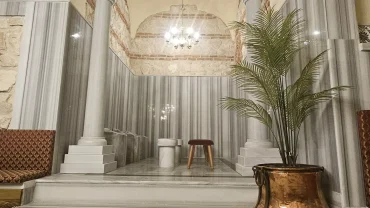The Turkish bath, known as a hamam in Turkey, hammam in the Arab world, and sometimes referred to as an Ottoman bath, is a place of public bathing associated with the culture of the Ottoman Empire and more broadly, the Islamic world. A fusion of ancient Roman, Byzantine, and Central Asian bathing practices, the Turkish bath has a rich history that spans centuries, embodying not just a cleansing ritual but a significant social and cultural institution.
Origins and History
The roots of the Turkish bath can be traced back to the Roman thermae, grand bathing complexes that provided a range of services similar to modern-day spas. When the Ottomans conquered Constantinople (modern-day Istanbul) in 1453, they inherited these Byzantine bathing traditions and merged them with the steam bathing practices of Central Asia, particularly those from the Seljuk Turks. This synthesis gave birth to the hamam, which flourished in the Islamic world, from the Middle East to North Africa, adapting to local customs and architectural styles.
During the Ottoman era, the hamam became a cornerstone of daily life, serving as a communal space for cleansing, relaxation, and social interaction. It was not only a place for the routine act of bathing but also a center for social gatherings, ceremonial rites such as bridal baths, and even a space for business discussions. The architectural grandeur of many historic hamams, with their elaborate tilework, domes, and columns, reflects their importance in Ottoman urban life.
Architectural Elements
A traditional Turkish bath typically follows a sequential layout, designed to gradually acclimate the body to higher temperatures before the bathing process begins. The main sections of a hamam include:
- The Changing Room (Camekan): A large, domed hall where bathers undress and relax on benches around the perimeter, storing their belongings in lockers or cubicles.
- The Cold Room (Soğukluk): The first transition zone where bathers acclimate to the heat. It serves as a preparation area before entering the warmer sections.
- The Warm Room (Ilıklık): Here, bathers continue to adjust to the heat, and it often contains basins of warm water for rinsing.
- The Hot Room (Sıcaklık): The heart of the hamam, this room houses the central marble platform (göbek taşı) where bathers lie to sweat and receive massages and scrubs. The room is heated by a combination of underfloor heating and steam.
The Bathing Ritual
The ritual of bathing in a Turkish bath is a methodical process that involves several stages:
- Relaxation: The experience starts in the changing room, where bathers unwind and mentally prepare for the bathing ritual.
- Heating: Bathers move through the cold and warm rooms to gradually raise their body temperature.
- Scrubbing: In the hot room, a bath attendant (tellak for men, natır for women) scrubs the bather with a kese (a coarse washcloth) to exfoliate the skin.
- Washing and Massage: Following the scrub, the attendant performs a soap massage, covering the bather in bubbles before rinsing them with warm water.
- Cooling: Bathers return to the cooler rooms to relax, rehydrate with water or traditional drinks like sherbet, and gradually cool down their body temperature.
Social and Cultural Significance
Beyond its hygienic function, the hamam played a vital role in Ottoman society. It was a place where people of all ages and social classes could gather, free from the distinctions of the outside world. The hamam facilitated community bonding, served as a site for important life rituals, and even functioned as a space where women, in particular, could socialize and enjoy a measure of freedom.
Legacy and Modern Day
Today, while the tradition of the Turkish bath has waned with the advent of modern plumbing and bathrooms, many historic hamams still operate in Turkey and other parts of the former Ottoman Empire. These establishments continue to offer a glimpse into the past, preserving the bathing rituals that have been passed down through generations. Modern spas and wellness centers around the world have also adopted elements of the Turkish bath, testament to its enduring appeal as a space for relaxation and renewal.
In essence, the Turkish bath stands as a beacon of cultural heritage, a symbol of communal well-being, and a testament to the Ottoman Empire’s contribution to the art of bathing. Its history is a fascinating journey through time, showcasing the evolution of public bathing practices and their role in society, from the ancient world to the present day.





Comment (0)